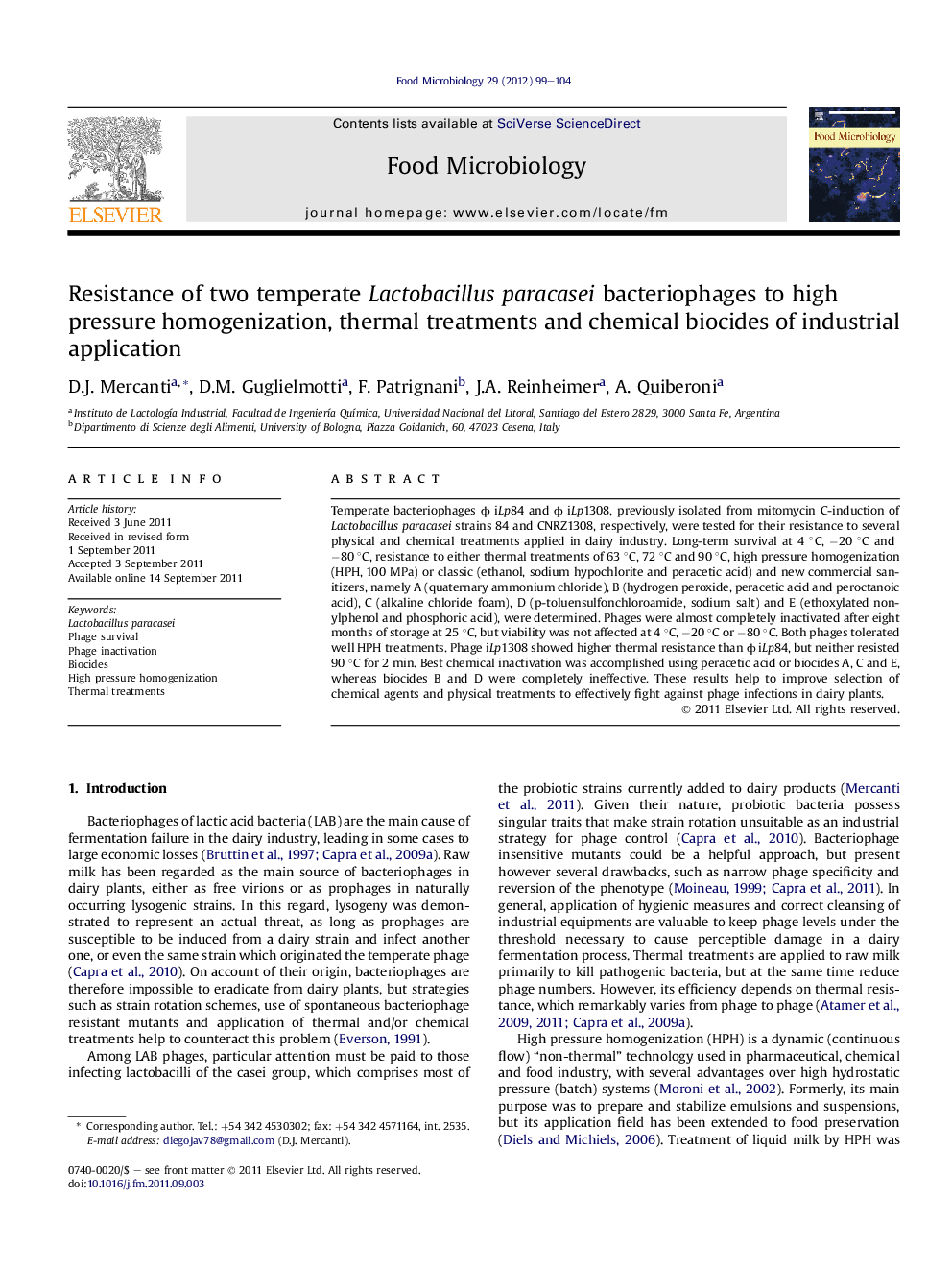| کد مقاله | کد نشریه | سال انتشار | مقاله انگلیسی | نسخه تمام متن |
|---|---|---|---|---|
| 4363193 | 1301546 | 2012 | 6 صفحه PDF | دانلود رایگان |

Temperate bacteriophages ф iLp84 and ф iLp1308, previously isolated from mitomycin C-induction of Lactobacillus paracasei strains 84 and CNRZ1308, respectively, were tested for their resistance to several physical and chemical treatments applied in dairy industry. Long-term survival at 4 °C, −20 °C and −80 °C, resistance to either thermal treatments of 63 °C, 72 °C and 90 °C, high pressure homogenization (HPH, 100 MPa) or classic (ethanol, sodium hypochlorite and peracetic acid) and new commercial sanitizers, namely A (quaternary ammonium chloride), B (hydrogen peroxide, peracetic acid and peroctanoic acid), C (alkaline chloride foam), D (p-toluensulfonchloroamide, sodium salt) and E (ethoxylated nonylphenol and phosphoric acid), were determined. Phages were almost completely inactivated after eight months of storage at 25 °C, but viability was not affected at 4 °C, −20 °C or −80 °C. Both phages tolerated well HPH treatments. Phage iLp1308 showed higher thermal resistance than ф iLp84, but neither resisted 90 °C for 2 min. Best chemical inactivation was accomplished using peracetic acid or biocides A, C and E, whereas biocides B and D were completely ineffective. These results help to improve selection of chemical agents and physical treatments to effectively fight against phage infections in dairy plants.
► Physical and chemical resistance of two Lactobacillus paracasei phages was tested.
► Both phages survived pasteurization treatments but not heating at 90 °C for 2 min.
► Both phages tolerated well high pressure homogenization treatments at 100 MPa.
► Peracetic acid was the only traditional biocide highly effective to inactivate phages.
► Three out of five new commercial biocides were effective for phage inactivation.
Journal: Food Microbiology - Volume 29, Issue 1, February 2012, Pages 99–104